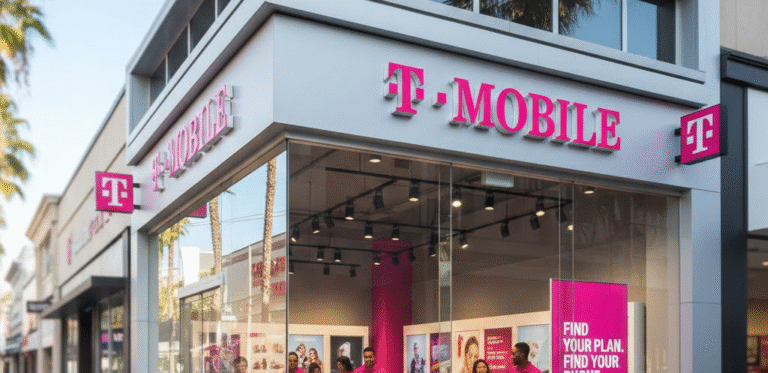
In today’s competitive marketplace, retail stores must do more than simply stock shelves and wait for customers to walk in. Success depends on creating a shopping experience that is efficient, engaging, and memorable. Whether you’re running a boutique or a larger store, optimizing your retail space can boost sales, enhance customer satisfaction, and streamline operations. Let’s explore some smart, actionable strategies to revamp your retail store for greater success.
1. Reevaluate Your Store Layout
The layout of your store plays a crucial role in customer flow and product visibility. Start by analyzing how shoppers move through your space. Is your store easy to navigate? Are high-demand products placed in prime locations?
Consider using a grid layout for efficiency (ideal for grocery or convenience stores) or a loop layout to guide customers through a specific path (common in department stores). Place impulse-buy items near the checkout and keep the entrance clutter-free to make a strong first impression.
2. Improve Visual Merchandising
Your visual presentation directly affects how customers perceive your brand. Display your products in a way that tells a story or highlights their value. Use color coordination, props, and signage to attract attention.
Regularly rotate displays to keep things fresh and seasonal. Feature best-sellers at eye level, and ensure lighting is bright and focused on key products. An inviting display can be the deciding factor that turns a browser into a buyer.
3. Embrace Technology
Technology plays a pivotal role in optimizing retail operations, and edge solutions are leading the way in transforming in-store efficiency. Begin by implementing a modern Point-of-Sale (POS) system, ideally supported by edge computing, to enable real-time tracking of sales, inventory, and customer behavior. This allows for quicker checkouts, more accurate stock management, and immediate insights for smarter decision-making.
Enhance the shopping experience further with interactive touchscreens, QR codes, or smart shelves that provide detailed product information and availability right on the spot. Incorporating mobile payment options, digital loyalty apps, and self-checkout kiosks—all powered by edge-enabled connectivity—can streamline service, reduce wait times, and cater to today’s digitally driven customers. With these technologies working at the edge, retailers can ensure faster response times and more personalized service without relying solely on cloud infrastructure.
4. Optimize Inventory Management
An optimized store isn’t just about the front end—your inventory processes matter, too. Overstocking wastes money and space, while understocking can lead to lost sales.
Use inventory management software to track which items sell fastest and predict future demand. Implement Just-In-Time (JIT) ordering to reduce excess stock and free up valuable space. Regularly audit your inventory to identify slow-moving products and adjust purchasing habits accordingly.
5. Enhance Customer Experience
The experience you provide can set your store apart from the competition. Train your staff to be knowledgeable, friendly, and proactive. Shoppers should feel welcome, not pressured.
Add thoughtful touches like comfortable seating areas, clean restrooms, or complimentary refreshments to improve comfort. Offering personalized assistance or remembering returning customers’ preferences can go a long way in building loyalty.
6. Maximize Space Efficiency
Even small stores can feel spacious with smart design. Use vertical shelving, under-counter storage, and wall-mounted racks to free up floor space. Keep aisles clear and ensure displays aren’t too crowded.
Multipurpose furniture—like display tables with hidden storage—can make your space more functional. Consider using mirrors and natural light to make your store appear larger and more inviting.
7. Track Metrics and Set Goals
You can’t improve what you don’t measure. Use your POS system to track key performance indicators (KPIs) such as sales per square foot, average transaction value, and customer return rates.
Set realistic, measurable goals to guide your revamp efforts. For example, aim to increase foot traffic by 10% over three months or reduce checkout wait times by 30 seconds. Analyzing data regularly allows you to refine your strategies and stay aligned with your objectives.
8. Leverage Community Engagement
A strong local presence can bring in loyal customers. Host in-store events, product demos, or exclusive previews to create excitement and word-of-mouth buzz.
Partner with other local businesses for cross-promotions or charitable events. Supporting community causes can also boost your brand image and attract socially conscious consumers.
9. Refresh Your Brand Identity
Sometimes, optimization calls for a branding facelift. Consider updating signage, uniforms, or marketing materials to reflect your store’s personality and appeal to modern consumers. A cohesive brand message—from your logo to your social media—helps reinforce your identity and attract your target market.
Final Thoughts
Retail success doesn’t happen by accident—it’s the result of deliberate choices and continual improvement. By rethinking your layout, embracing technology, enhancing customer service, and using data to guide decisions, you can transform your store into a vibrant, high-performing space.
Remember, retail optimization is an ongoing process. Stay adaptable, listen to your customers, and always look for opportunities to fine-tune your strategy. A thoughtful revamp today could lead to sustained success tomorrow.


